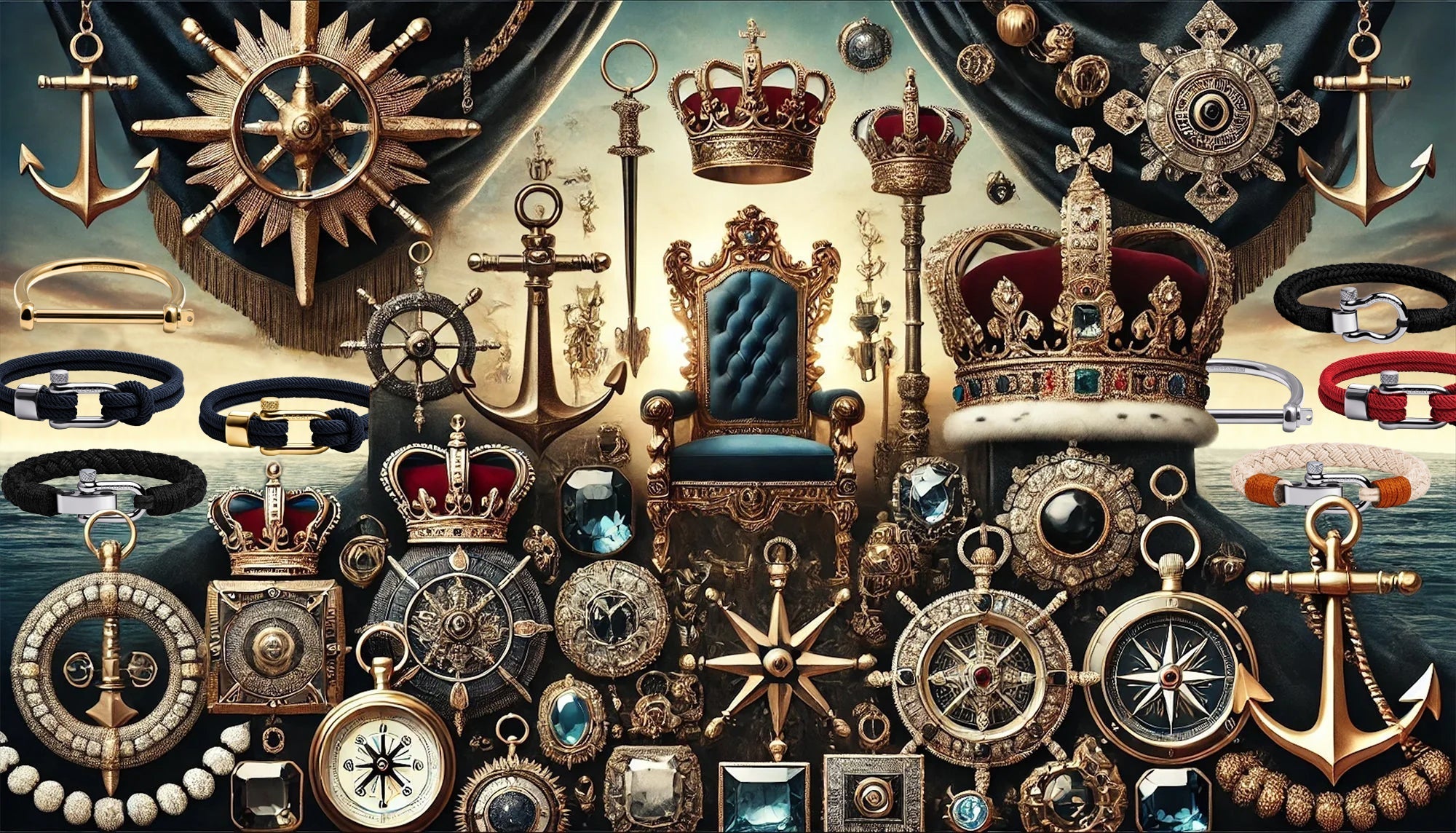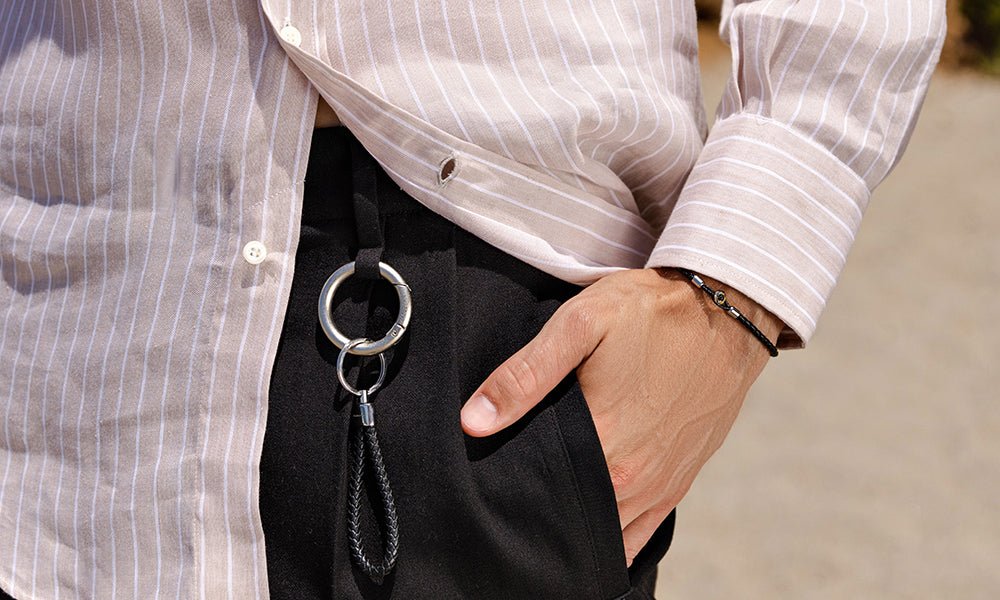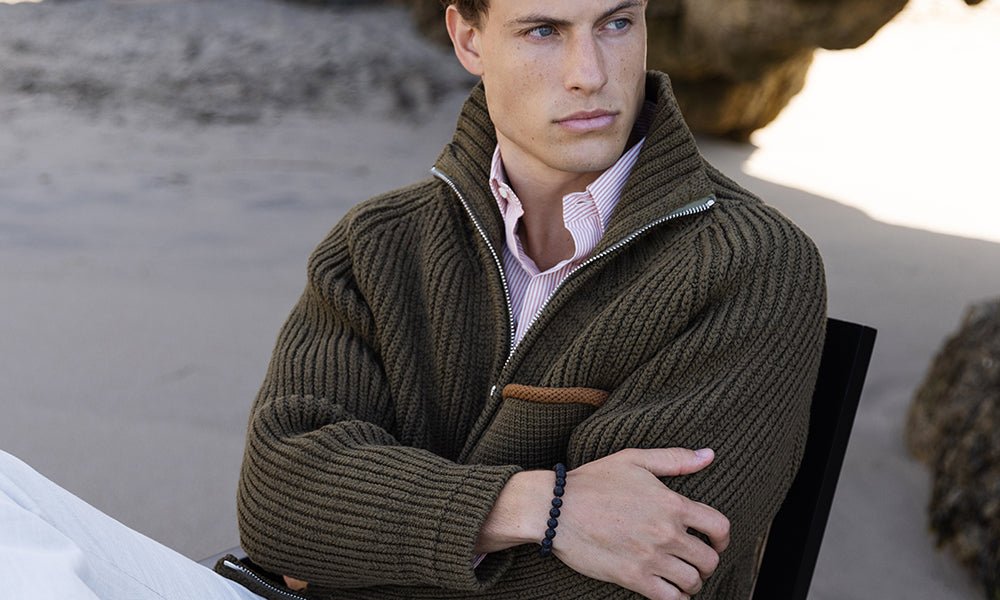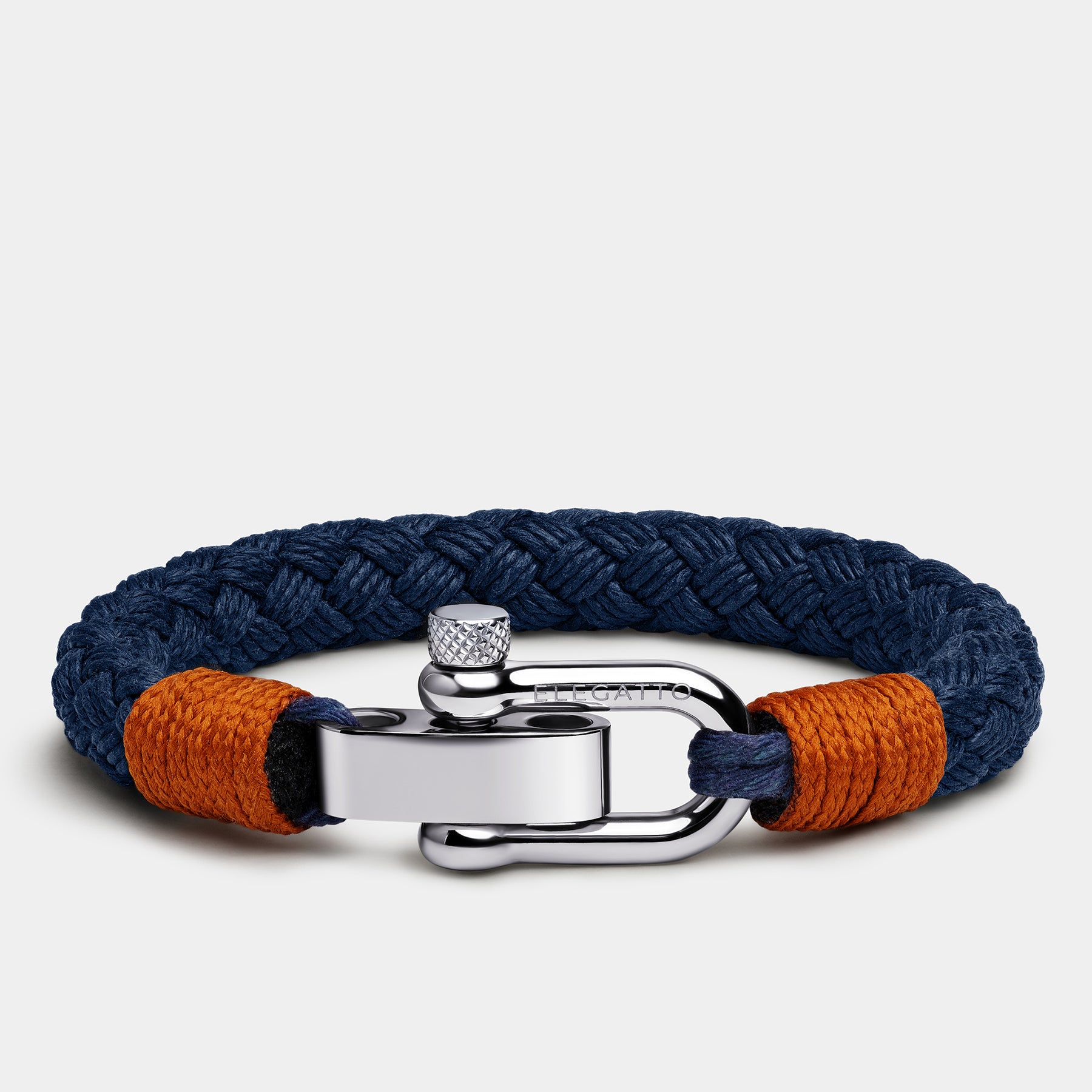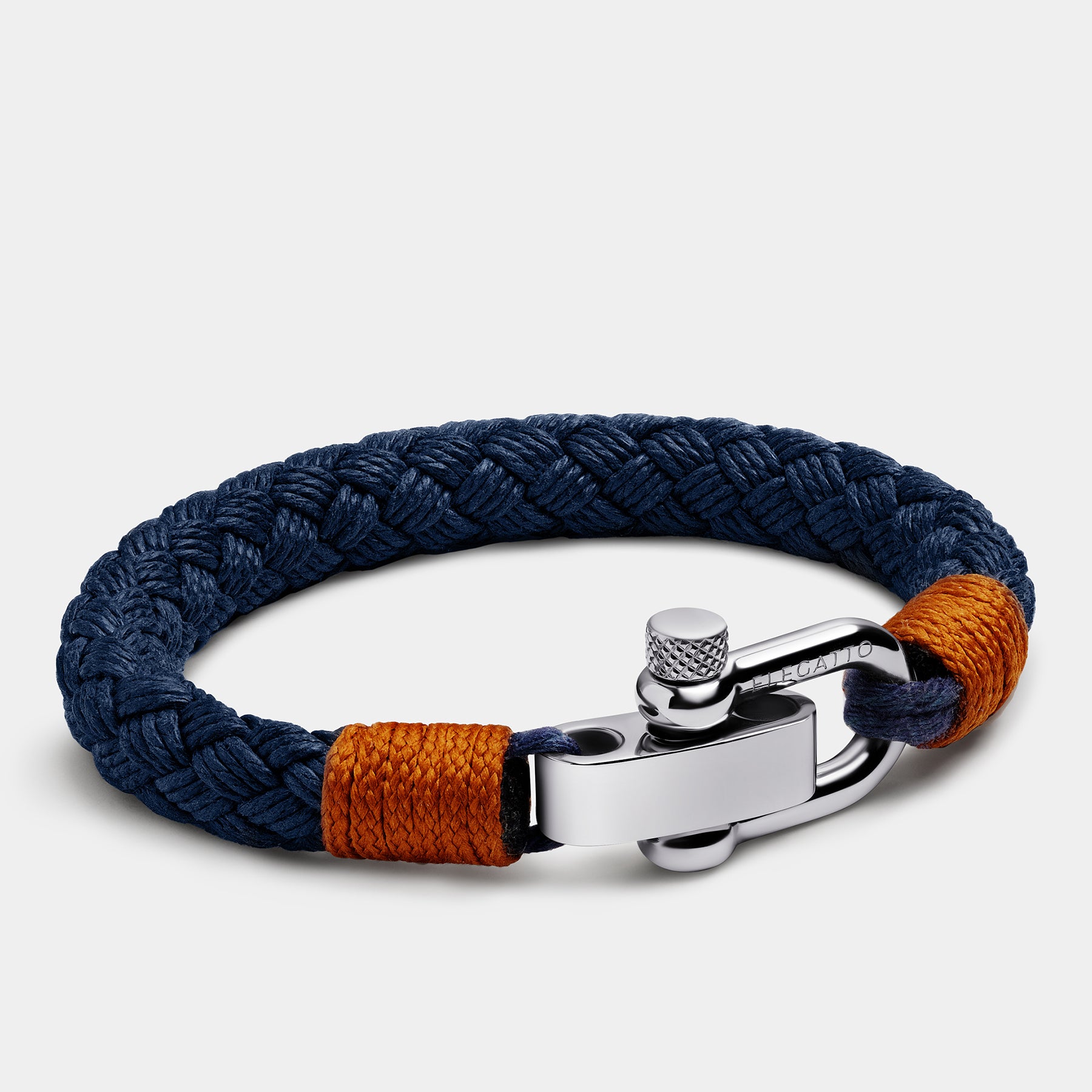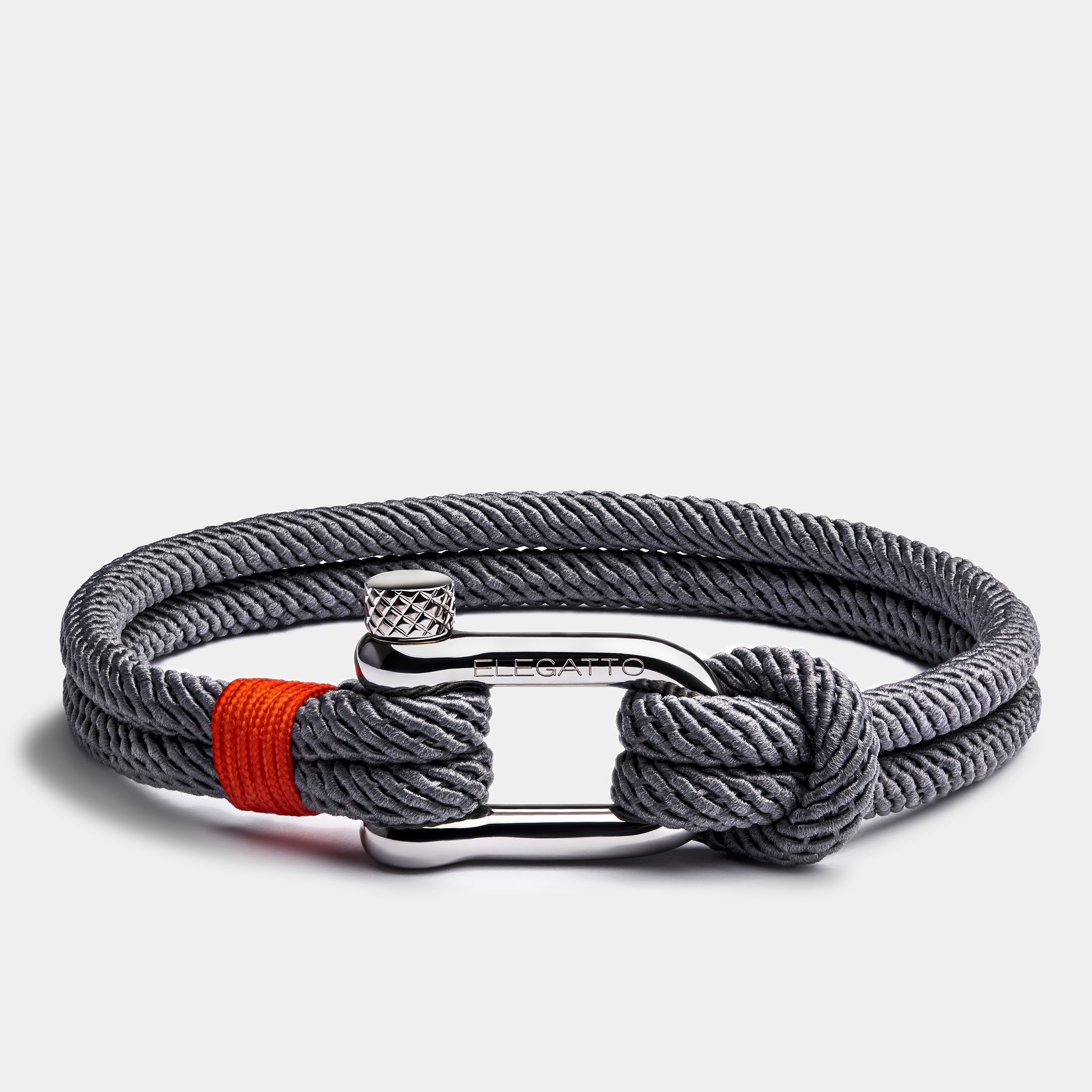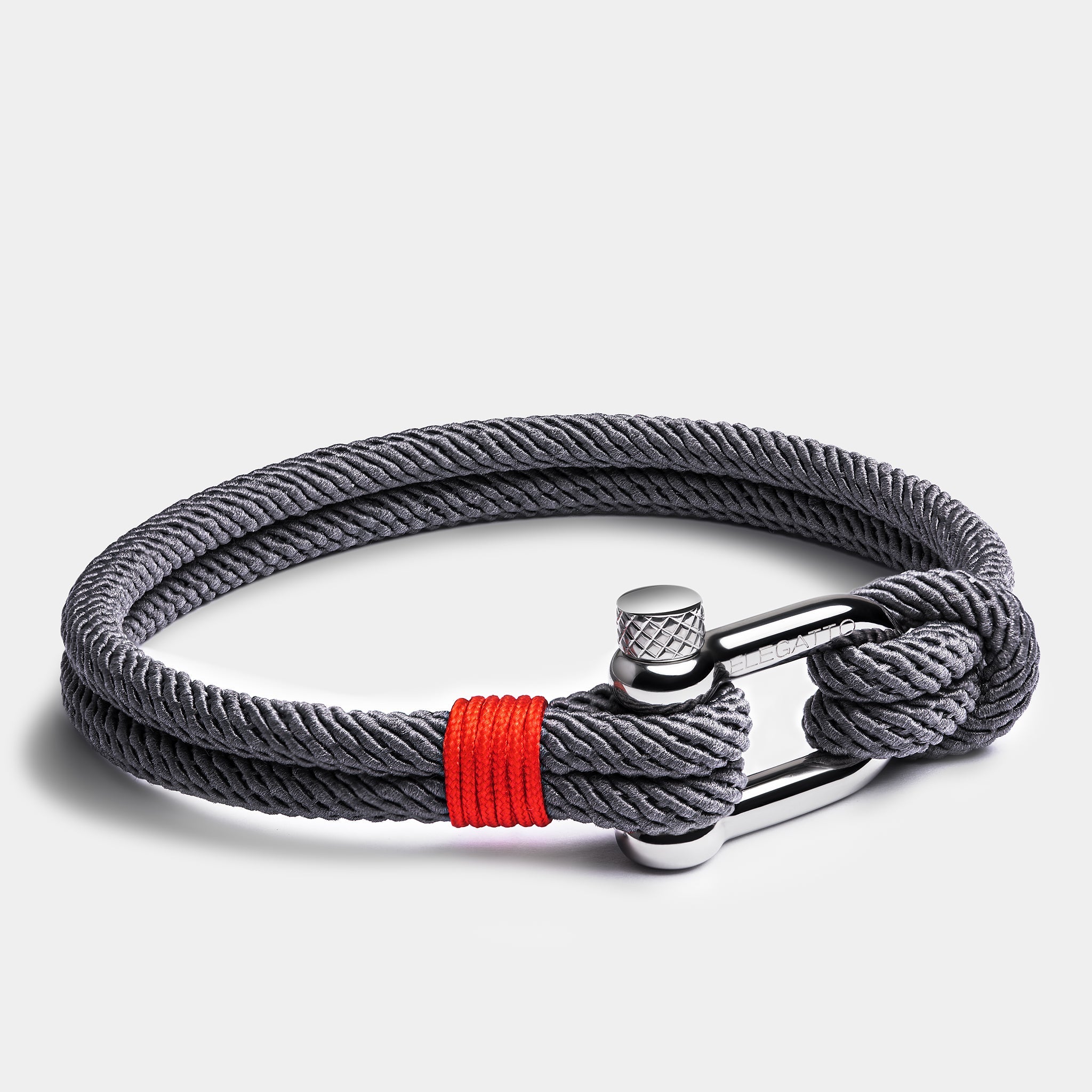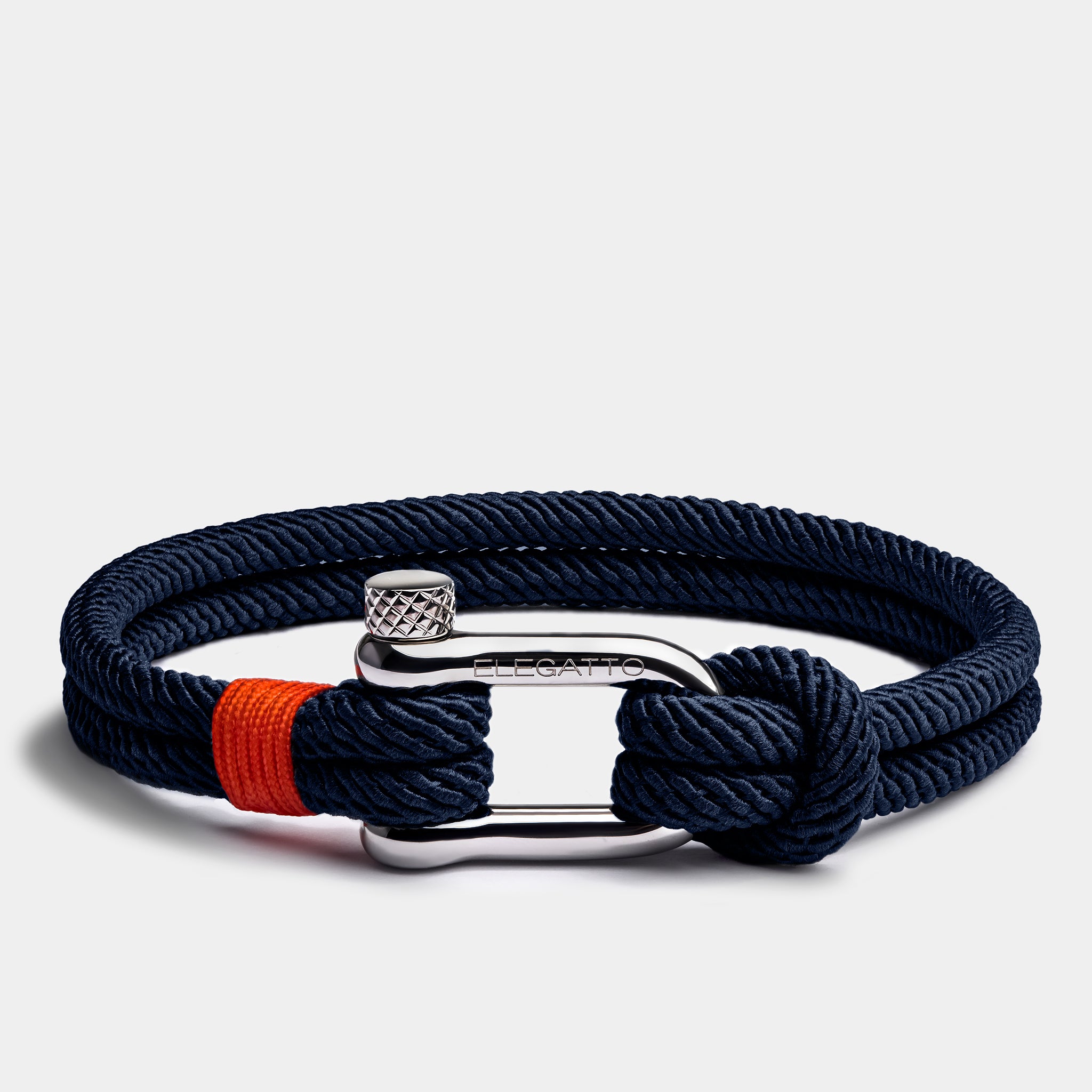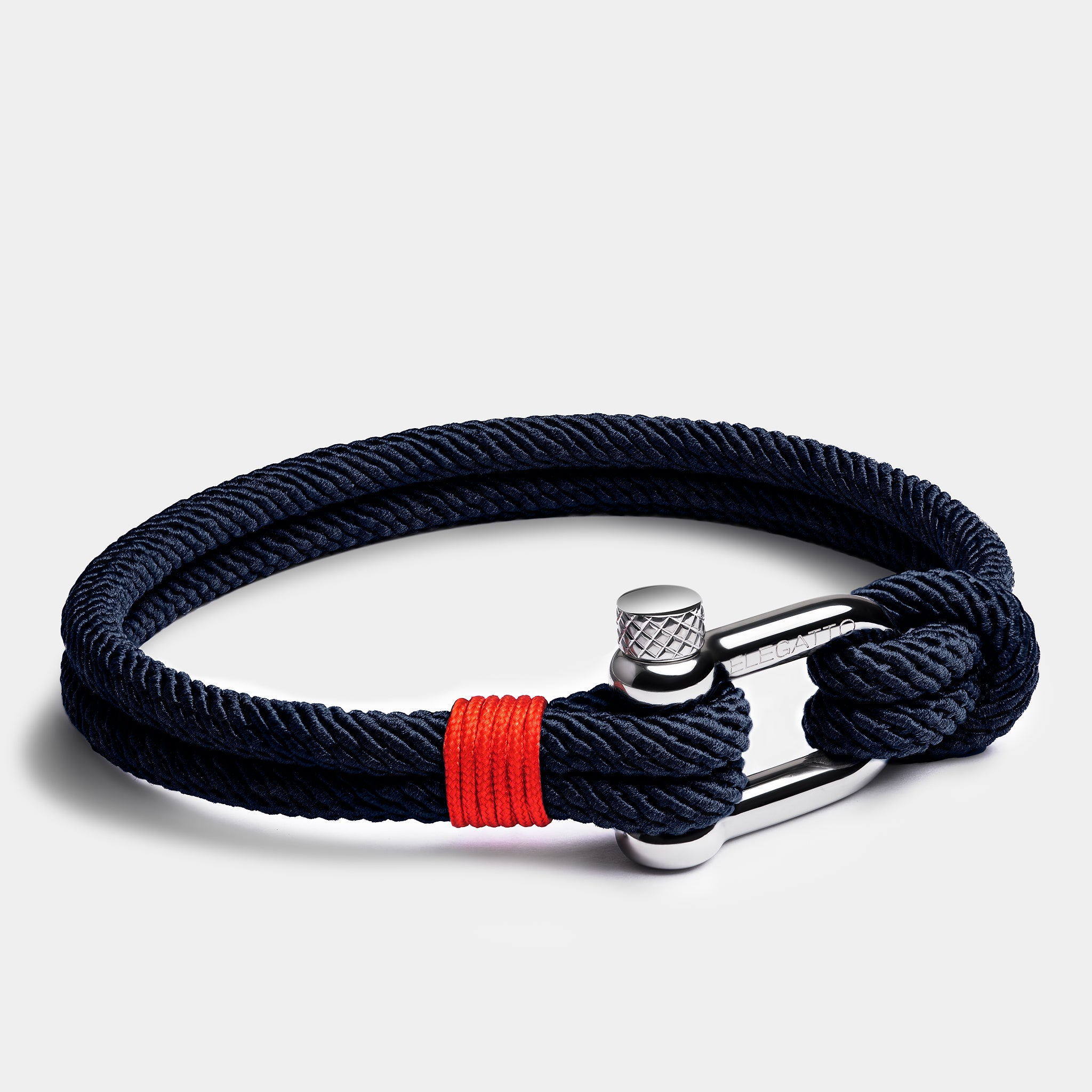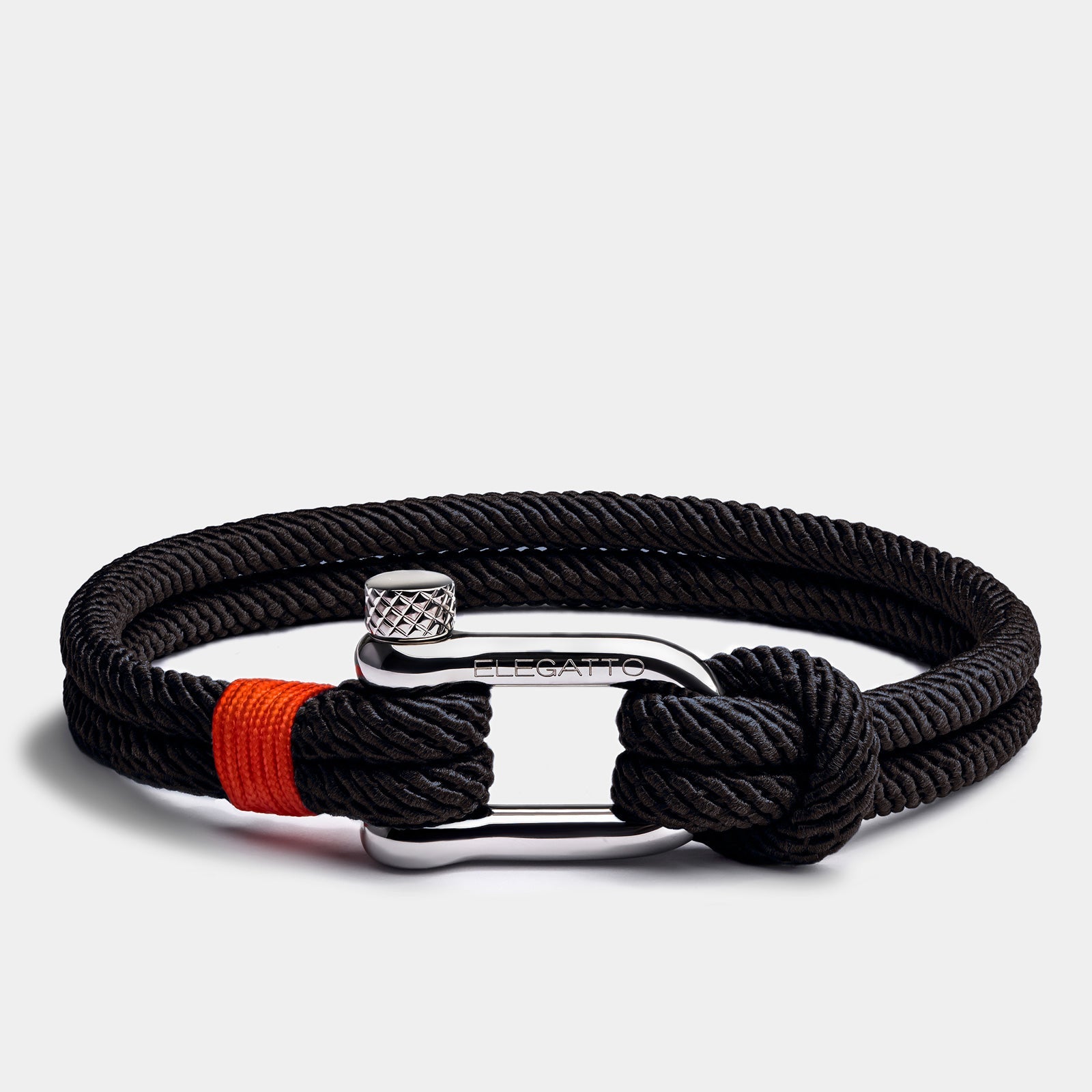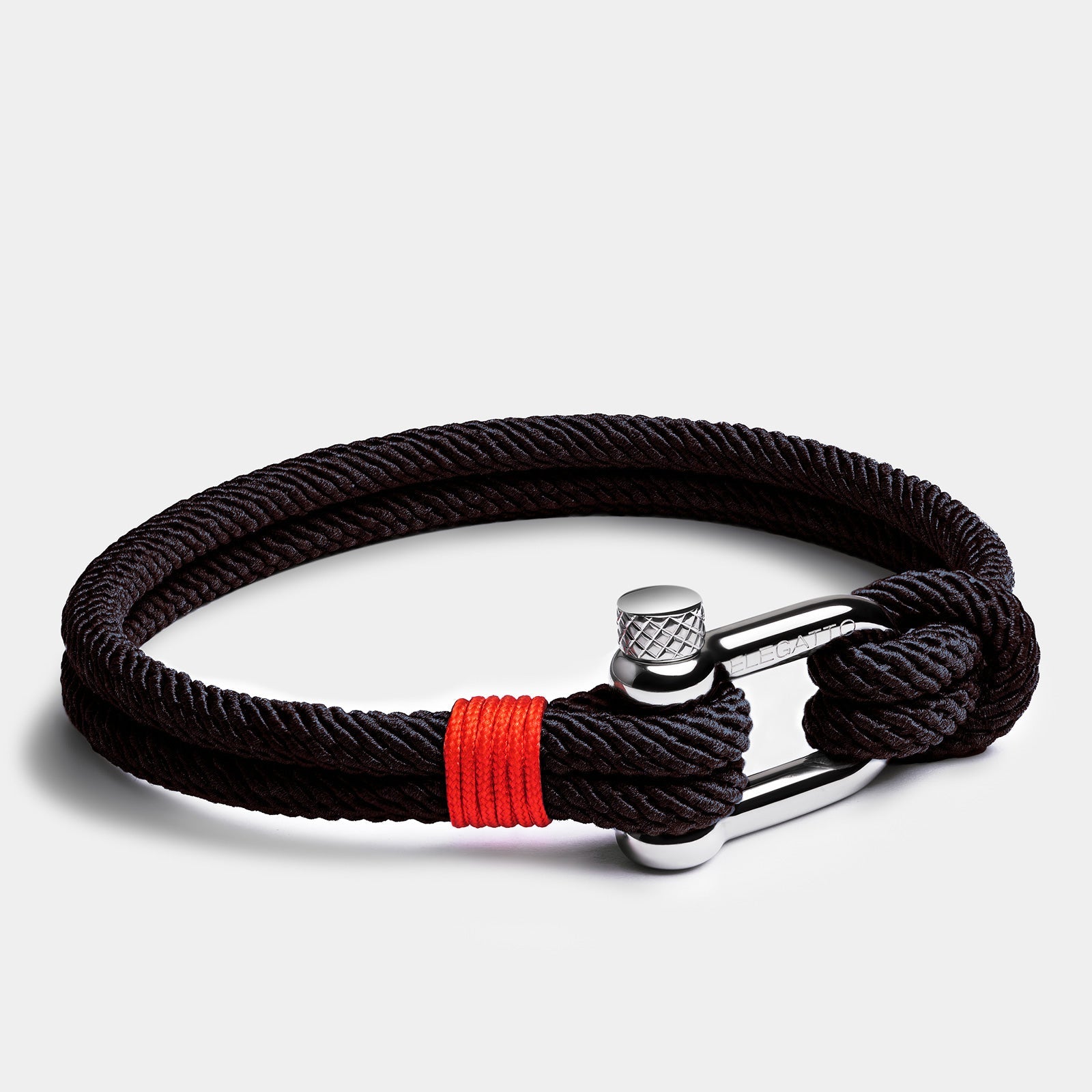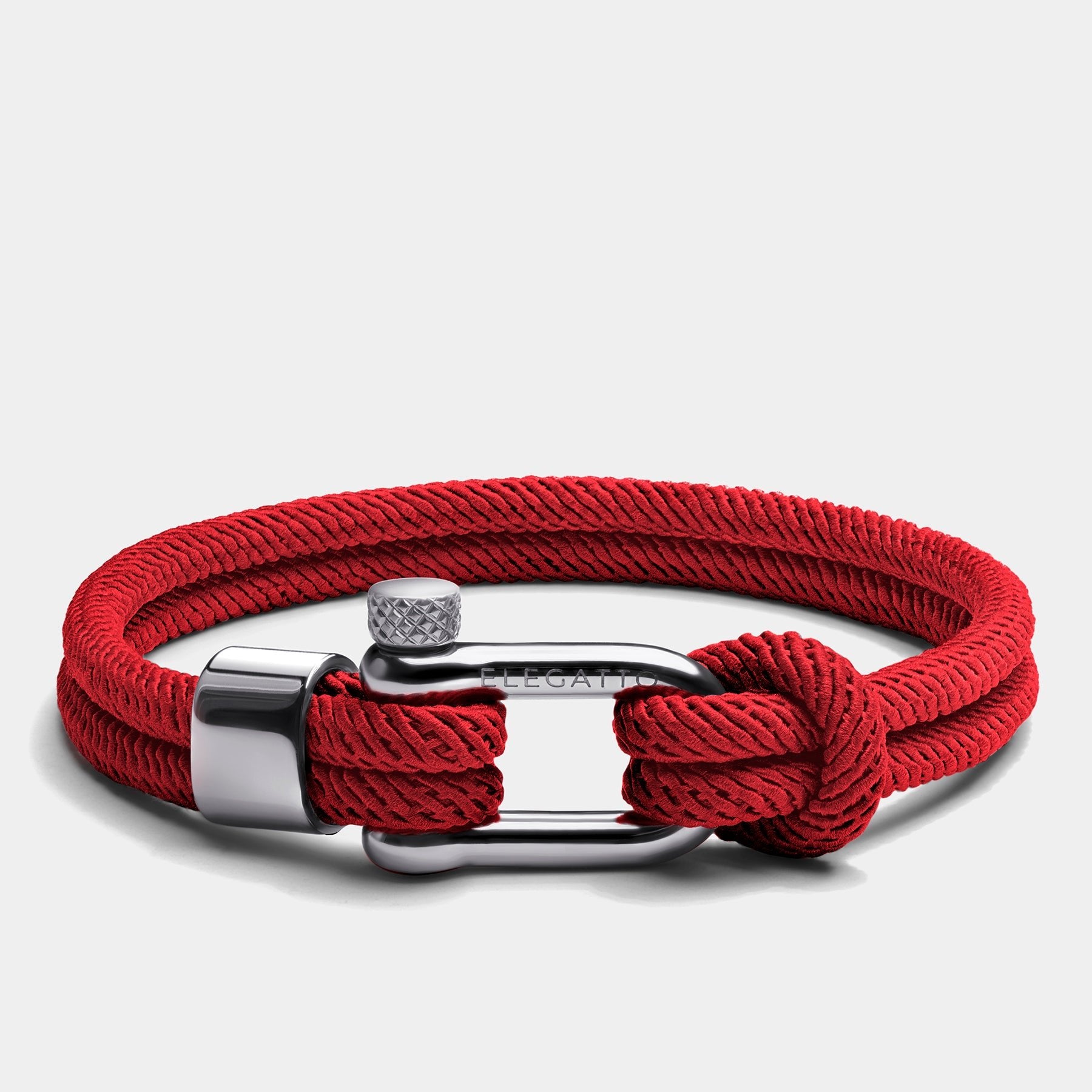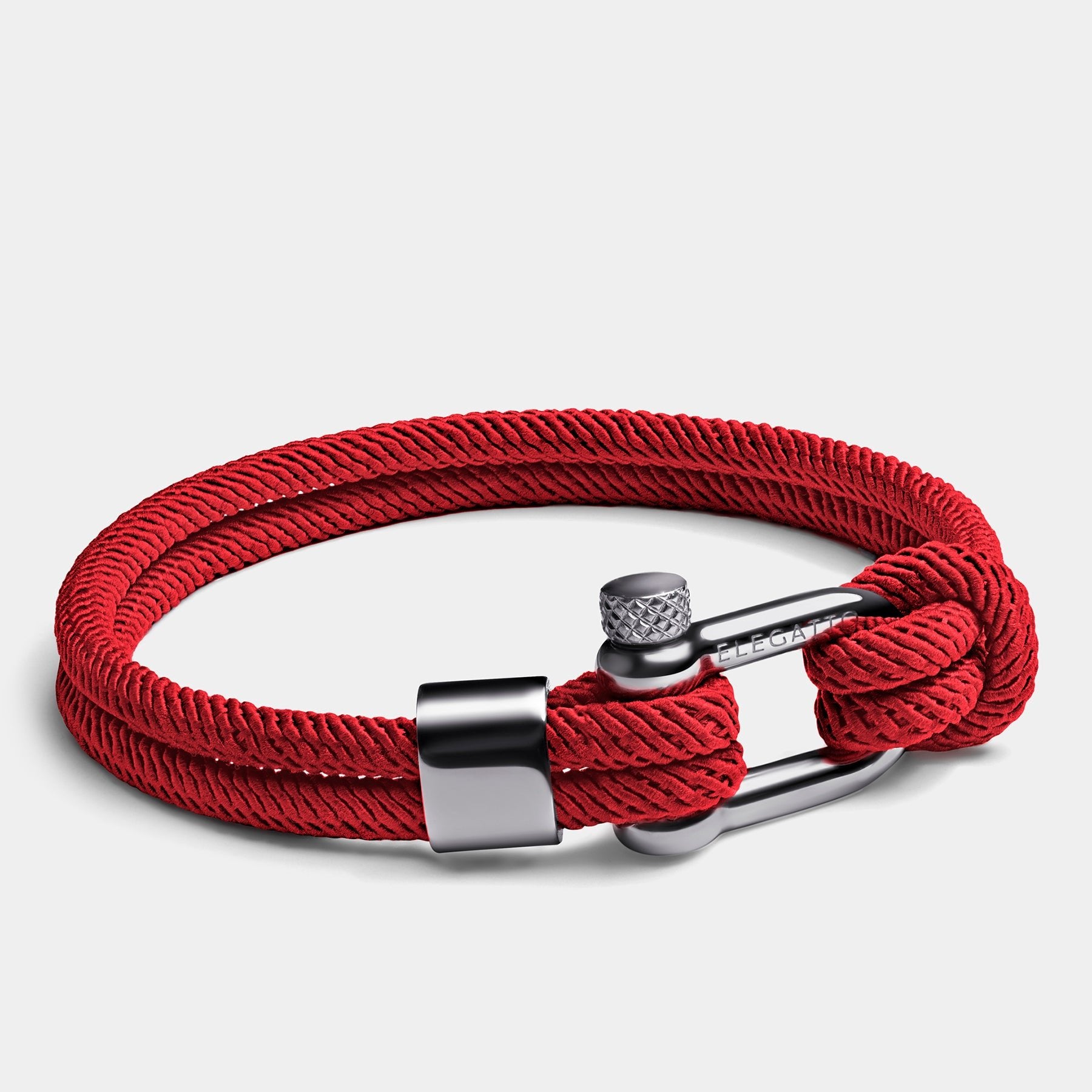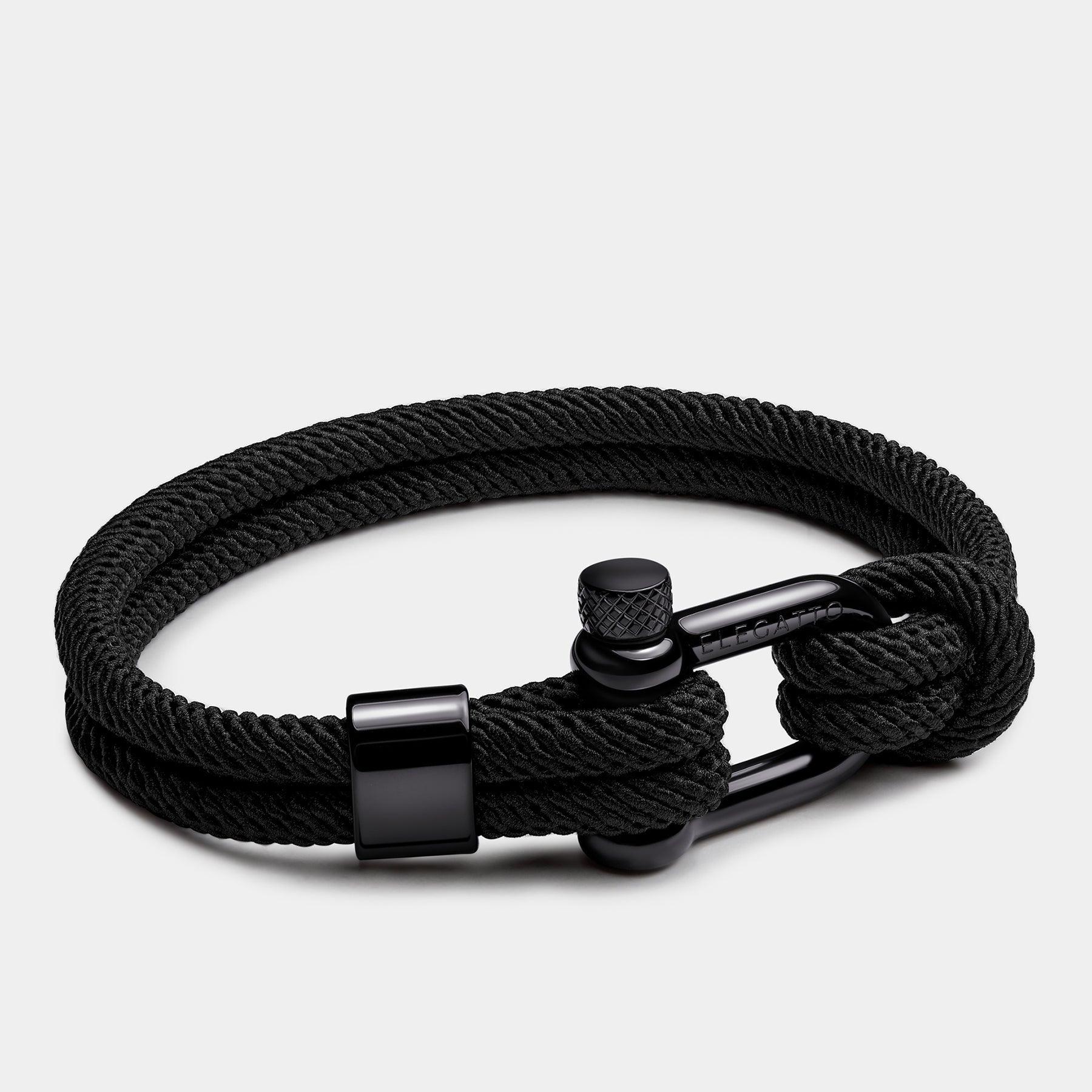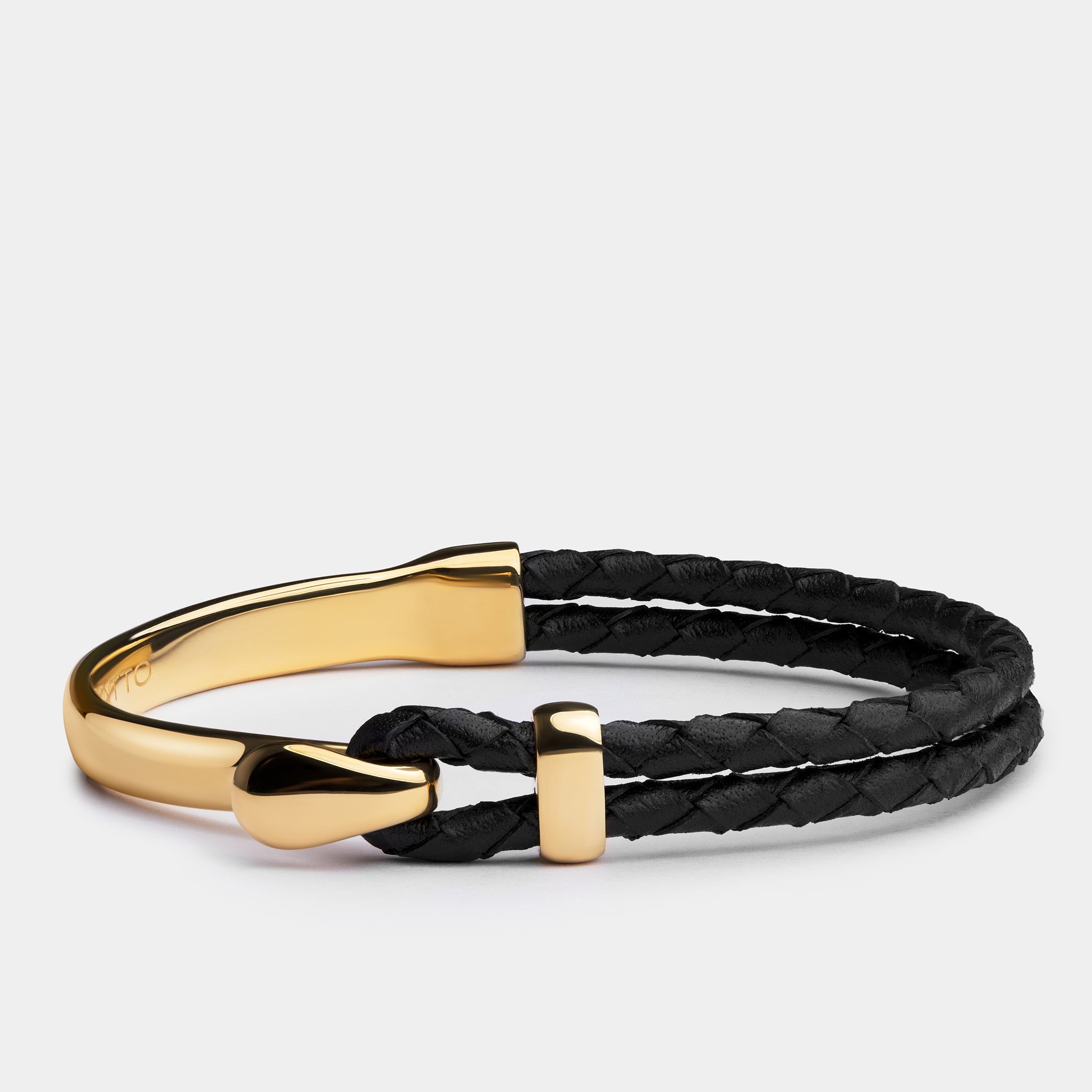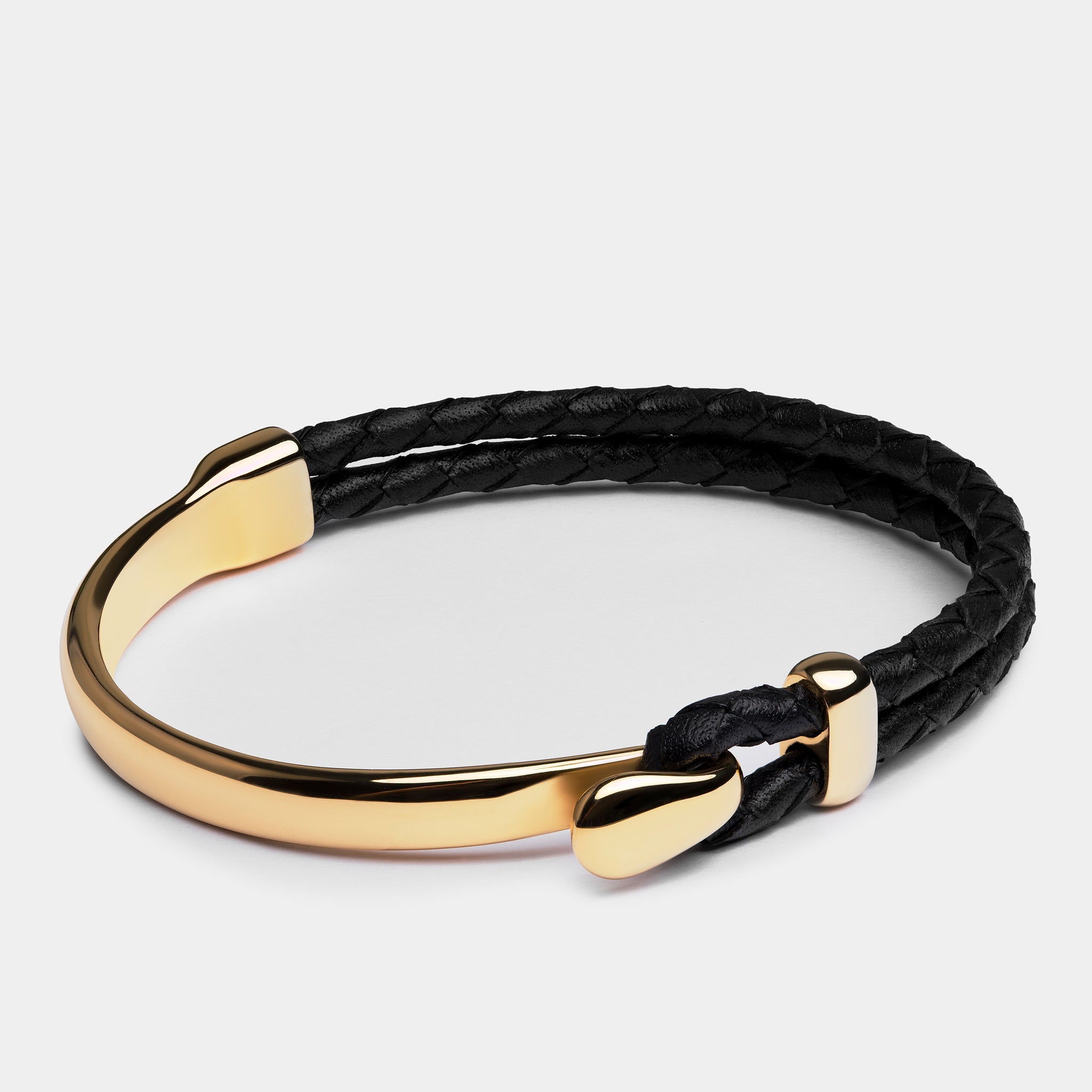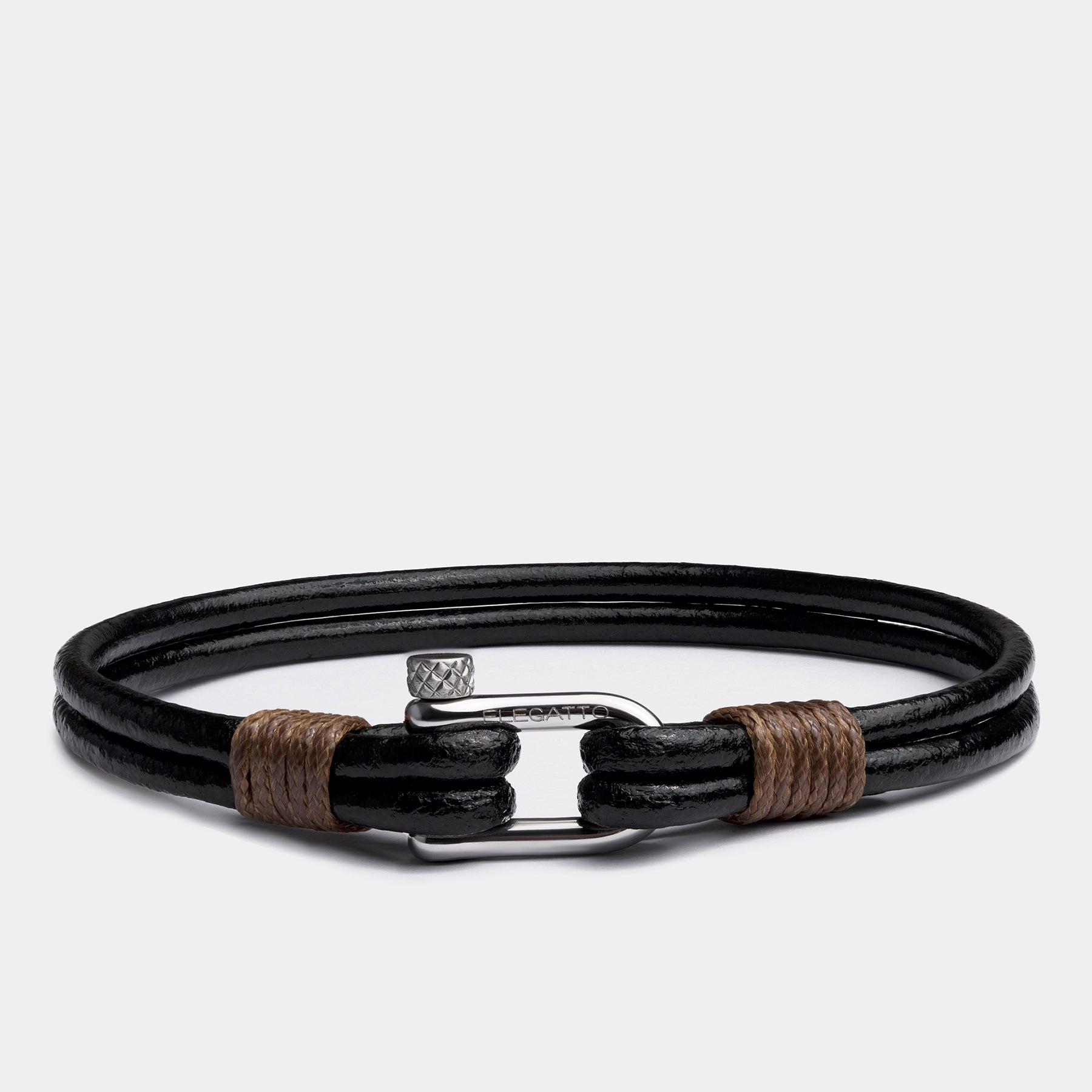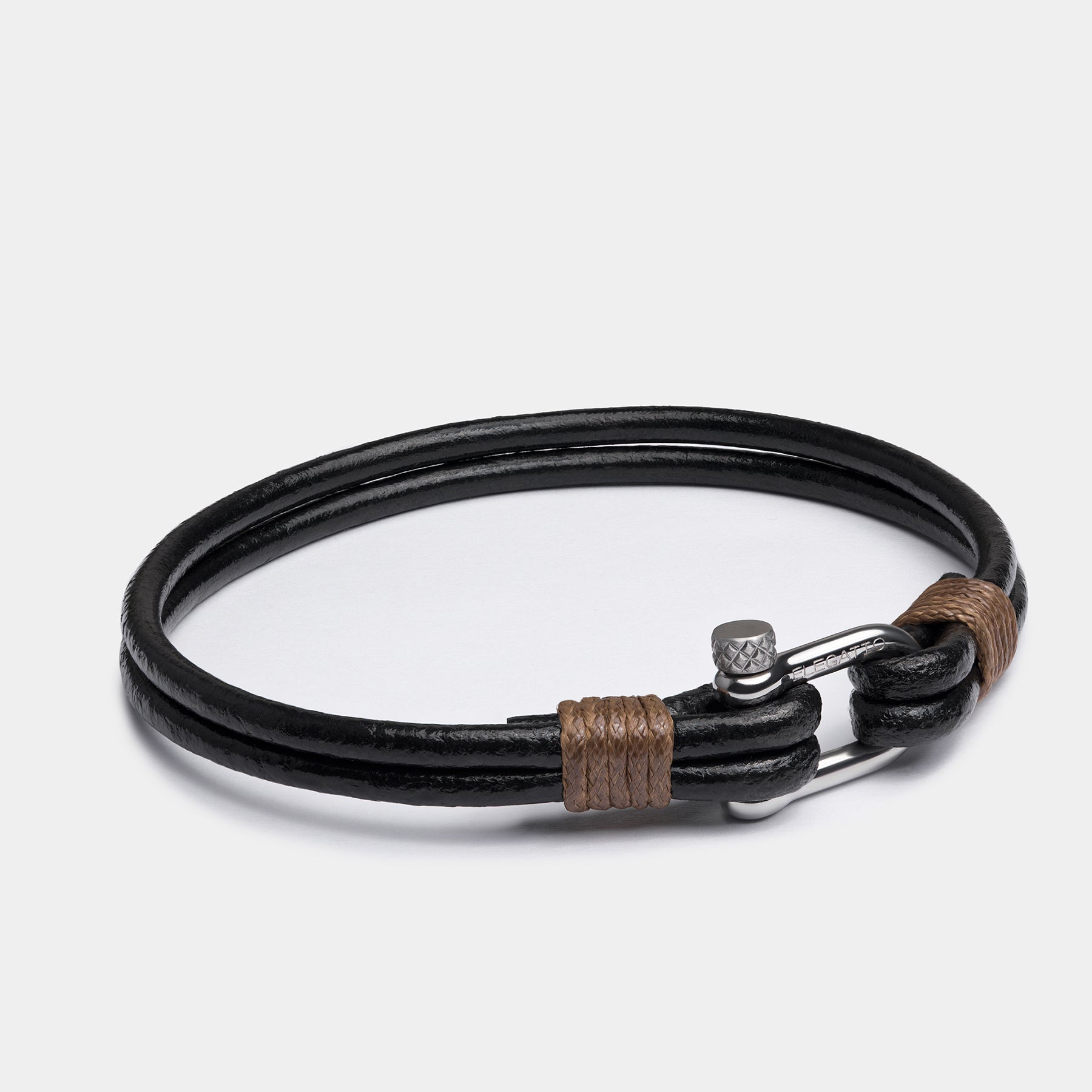Jewelry has always been more than ornamentation. Since ancient times, men have outsourced their authority to jewelry, proving their dominance with sparkly distractions for millennia. For centuries, men have let their accessories do the talking while they sit in gilded silence. From the battlefield to the throne room, the glitter of gold and the gleam of jewelry have communicated messages that words could not. Join Elegatto on a trip through time, where men proved dominance one shiny accessory at a time. Before we dive into the glittering halls of history, let’s drop anchor and start with nautical jewelry.
Nautical Jewelry: Anchors of Tradition and Strength
Nautical jewelry has long been a significant element of men’s jewelry, especially among sailors, fishermen, and naval officers to weather the storms. Anchors, compasses, and maritime symbols crafted in silver and gold were not merely decorative but did what maps and common sense couldn’t—ward off bad luck. These served as talismans of protection, good fortune at sea, and tiny symbols of stability for men braving the most unstable environment: the vast unknown of the oceans. In coastal communities, nautical jewelry has become a mark of identity and the easiest way to say, ‘I’m from here, and yes, I’ve seen the ocean.’ Today, these motifs endure, linking modern men to centuries of seafaring history and the spirit of adventure, because what says ‘spirit of adventure’ more than wearing Elegatto, even if you’re just navigating the office? Now that we’ve navigated the oceans, let’s return to the land of opulent courts and battlefields of history.
Ancient Warriors: When Swords Weren’t Enough, They Added Jewelry to Fight in Style
In the ancient world, warriors adorned themselves with jewelry to symbolize bravery and invoke divine protection. Ancient warriors accessorized for battle—because a plain sword just wouldn’t cut it. When facing death, warriors thought, ‘Better look good for the gods.’
The Celts, for instance, wore intricately designed ‘torcs’ or fancy metal chokers made of gold or bronze that represented strength and status. The Celts were strong, rich, and their necks deserved a medal as they terrified their enemies with their swords and dazzled them with their jewelry. These torcs were often buried with their owners, because they couldn’t risk being underdressed in the afterlife.
In ancient Egypt, pharaohs didn’t stop at scepters as they ruled the Nile, they displayed their power through rings, inlaid with lapis lazuli and other precious stones. Pharaohs wore amulets, saying, ‘I’m divine, and this turquoise proves it.’ Because what’s ultimate power without a few precious stones to really sell it? These pieces were not merely decorative; they were believed to protect military leaders in battle, boosting their battlefield confidence with spiritually charged accessories—fashionable and allegedly effective.
Royal Regalia: Power Dressing for the Absolute Monarch
Throughout history, kings and emperors have used jewelry to prove they were chosen by the divine. For instance, ruling Europe was 20% politics, 80% magic gemstones. Crowns, scepters, and rings of European monarchs were often adorned with gemstones that added a mystical backstory.
Kings were in touch with their emotions. Diamonds symbolized strength, sapphires for wisdom, and rubies for passion. These items not only elevated the kings above their subjects, literally shining from above, but also served as a visual reminder of their endorsement from God, as a way of saying, ‘I’m chosen, and you’re not.’
In the Mughal courts, rulers didn’t just govern; they accessorized their way to geopolitical superiority. They wore a fortune on their heads. Turbans dripped in jewels, showcased their immense wealth and power. Brooches and necklaces were not just personal adornments but a solid diplomatic strategy, reinforcing their dominance over their subjects and neighboring territories.
Renaissance and Baroque Europe: When Subtlety Died with the Rise of Ornate Displays
The Renaissance era marked a time of ‘cultural rebirth’ when men took jewelry to a whole new level. Kings and nobility in Europe donned chains of office so big, you’d think they were flexing for Instagram. These chains, often adorned with family logos, emphasized their authority and designer bloodlines.
Because Renaissance jewelry wasn’t extra enough, Baroque designers continued the trend with even more elaborate designs. Men of high status encrusted their wardrobes literally on every possible surface with jewel-encrusted buttons, sword hilts, and cufflinks, blending fashion with a clear assertion of power.
Tribal Leaders: Proving that Jewelry is a Universal Language
In many indigenous cultures, jewelry served as a marker for warrior status and running tribes. Among the Zulu chiefs of South Africa for instance, elaborate beadwork necklaces and bracelets were the ultimate conversation starters, with each color and pattern telling their life stories.
In the Pacific Islands, men wore trophies around their necks made of boar tusks and shells, symbolizing their prowess in hunting, that literally said, ‘I killed the jewelry.’ Native American leaders used jewelry made of silver and turquoise, not only for its beauty but also for its connection to the earth and staying grounded. These pieces were often bespoke (made just for them), making each piece a leadership badge and unique testament that they mattered most within their community.
Modern Influences: Jewelry as a Power Statement
In the modern era, men still prove nothing says power like a shiny accessory. Think of the bold statement pieces worn by hip-hop moguls turning jewelry into walking billboards for their wealth with platinum chains, diamond-encrusted watches, and signet rings, and business tycoons accessorizing like kings, but with a corporate twist. Contemporary ideas of success and individuality haven't changed much from ancient times, because nothing says ‘timeless tradition’ like using jewelry to show off. Even in formal political circles, jewelry remains a subtle but powerful tool to make arguments seem more valid. Cufflinks engraved with family logos, lapel pins designating rank or achievement, and understated luxury watches signaling quiet, elegant reminders of who’s calling the shots.
The Enduring Legacy of Men’s Jewelry: Proving for Centuries that Shiny Things Aren’t Just for Women
From warriors draped in gold torcs and tiara-wearing kings to sailors proving they can explore the unknown, men have always loved their power props. While styles and materials have changed over time, the goal remains: jewelry is still just shiny self-advertising and some optimism. Looking ahead, men’s jewelry will continue its proud tradition of elegant storytelling. Whether understated or over-the-top, men’s jewelry still whispers, ‘Centuries of flexing led to this.’ Wear history’s finest power symbols. Shop
ELEGATTO.
